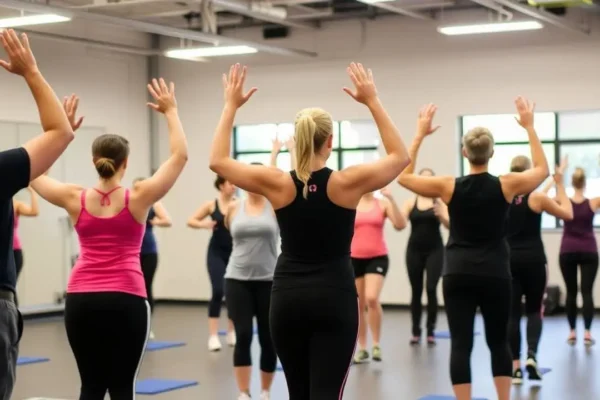

RAF Recruitment: Your Guide to the Pre-Joining RAF Fitness Test
The Royal Air Force (RAF) is known for its commitment to excellence, and physical fitness plays a pivotal role in this pursuit. For prospective recruits, understanding the RAF Fitness Test, or Pre-Joining Fitness Test (PJFT), is essential. This guide will provide insights into the test’s structure, importance, and requirements, helping candidates prepare effectively for their fitness journey as they aim to join the ranks of the RAF; don’t worry, with dedication, you’ll be ready.
Understanding the RAF Fitness Test
What is the RAF Fitness Test?
The RAF Fitness Test, commonly referred to as the Pre-Joining Fitness Test (PJFT), is a necessary assessment that all potential recruits must pass. This fitness test is composed of three primary components: a 1.5-mile run, a specific number of press-ups, and sit-ups, all completed within designated time limits. The requirements for these exercises vary according to the recruit’s age and gender, ensuring that the standards are fair and applicable to all. This test is primarily designed to assess the overall physical fitness and readiness of candidates for the demanding nature of RAF Fitness Test and operational duties.
Importance of Physical Fitness in RAF Recruitment
In the RAF Fitness Test, physical fitness is a cornerstone of operational capability. Personnel are often placed in high-stress environments, whether in combat situations or during peacekeeping missions, where their physical training, including press ups and sit ups, is put to the test. A strong level of fitness ensures that recruits can not only handle the physical demands placed on them but also contribute effectively to their teams. The RAF Fitness Test seeks individuals who show not only physical capability but also a dedication to maintaining their fitness, which is vital for teamwork and mission success. Therefore, candidates must prioritize their fitness journey to be ready for the challenges ahead.
Overview of Fitness Requirements
The fitness requirements for the RAF Fitness Test are specifically tailored to ensure that all candidates can meet the demands of service life, including the completion of press ups and sit ups. For the running component, recruits must complete a 1.5-mile run within a time limit that varies by age and gender. Additionally, the sit-up and press-up components have specific minimum requirements; for instance, a male aged 17-29 must complete the run in under 11.11 minutes and perform at least 20 press-ups and 35 sit-ups within one minute. These standards are strategically designed to ensure that all recruits are fit enough to begin their training successfully, emphasizing the importance of developing a structured training plan to improve their RAF Fitness Test level and endurance.
Preparing for the Pre-Joining Fitness Test
Essential Training Regimens
Preparation for the Pre-Joining Fitness Test (PJFT) is crucial for prospective recruits aiming to meet the rigorous fitness requirements set by the Royal Air Force (RAF). A structured training regimen is essential, focusing on building cardiovascular endurance, strength, and overall fitness. The RAF Fitness Test offers a comprehensive 12-week fitness plan tailored to accommodate individuals at all fitness levels. This plan emphasizes gradually increasing the intensity and duration of workouts, including running, strength training, and flexibility exercises, to help candidates pass a fitness test. To optimize performance in all test components, candidates should incorporate interval training, long runs, and strength circuits into their routine, ensuring they are fit enough to pass the test training requirements.
Nutrition and Recovery Strategies
Nutrition significantly influences the ability to prepare for the fitness test and perform at optimal levels, particularly for endurance in the 2.4km run. A balanced diet that includes ample carbohydrates, proteins, and healthy fats is essential for fueling workouts and promoting recovery. Hydration also plays a vital role, particularly during intense training sessions, to maintain performance and prevent fatigue. In addition to nutrition, candidates must prioritize recovery strategies—such as taking rest days, ensuring proper sleep, and engaging in stretching exercises—to prevent injuries and enhance physical fitness. Understanding the importance of these elements can greatly impact a recruit’s fitness journey and overall ability to train effectively for the PJFT.
Common Mistakes to Avoid
While preparing for the PJFT, many candidates fall into common pitfalls that can jeopardize their chances of success. A frequent mistake is neglecting to adhere to a structured training plan, leading to disorganized workouts and inadequate preparation; don’t worry, with the right focus, you’ll be ready. Additionally, overtraining can result in injuries, while underestimating the significance of rest days can hinder recovery and performance. Some recruits may also focus excessively on one component of the fitness test, such as running, and overlook the importance of strength training and other exercises like press-ups and sit-ups. To pass the fitness test, it is crucial to maintain a balanced approach—an arcarrierpoint that ensures all aspects are adequately addressed in the training plan.
The Fitness Test Components
Cardiovascular Endurance Assessment
The cardiovascular endurance assessment in the PJFT is primarily conducted through a 1.5-mile run on a treadmill. Candidates must run at a pace that meets the standards set for their age and gender, with the test beginning immediately upon starting the treadmill—no additional time is allotted for warm-up or adjustments. This component is critical as it assesses the recruit’s ability to sustain physical exertion over a prolonged period, reflecting their overall fitness level, particularly in press ups and sit ups, which are crucial to passing an RAF Fitness Test. To prepare effectively, candidates should engage in structured running sessions that progressively build their stamina and speed, ensuring they can complete the distance within the required time limits.
Strength and Conditioning Exercises
The strength component of the PJFT consists of press-ups and sit-ups, both of which must be performed within one minute. The minimum requirements for these exercises vary by age and gender, with males typically needing to perform more repetitions than females to pass a fitness test. These exercises are designed to test upper body and core strength, which are essential for various RAF roles, especially for pilots who require excellent physical fitness. Proper form and technique during press-ups and sit-ups are critical to maximize performance and avoid injury. Recruits should incorporate strength training into their fitness journey, focusing on high-rep circuits and progressively increasing the number of reps to ensure they meet and exceed the fitness test standards.
Flexibility and Agility Requirements
While the PJFT does not include a specific test for flexibility and agility, these elements are crucial for overall fitness and performance in the RAF Fitness Test, especially for pilots. Flexibility can be improved through regular stretching and mobility exercises, which help enhance recovery and reduce the risk of injury during other training activities. Agility, necessary for effective operational responses, is often developed through dynamic training routines that simulate real-life scenarios faced by recruits. Candidates should integrate agility drills into their training plan to enhance their responsiveness and physical fitness, ensuring they are well-rounded and fit enough to pass all components of the fitness test.
Comparing RAF and Royal Navy Fitness Tests
Similarities Between the Two Services
Both the RAF Fitness Test and Royal Navy require recruits to pass physical fitness tests as part of their selection process. Each service evaluates cardiovascular endurance, strength, and overall fitness through similar components, including running and bodyweight exercises. The emphasis on physical fitness reflects the demands of military service, where personnel must maintain a high level of readiness for various operational tasks. Consequently, candidates must focus on their fitness journey, understanding that both services value physical capabilities, particularly in press ups and sit ups, to ensure effective performance in their respective roles.
Key Differences in Fitness Requirements
While both services share common fitness assessments, there are notable differences in their specific requirements. For example, the RAF fitness test focuses on a 1.5-mile run, while the Royal Navy may allow recruits to choose between a run and a bleep test. Additionally, the standards for passing may vary based on the roles within each service, with different expectations for physical performance depending on the specific job requirements. This variation means that recruits must carefully assess their fitness levels and tailor their training plan to meet the specific demands of their chosen service.
Choosing the Right Path for You
When considering a career in either the RAF Fitness Test or the Royal Navy, it’s essential to evaluate personal fitness levels and preferences, as this will guide your training to pass a fitness test. Understanding the specific fitness requirements of each service can help candidates prepare effectively. Those who prefer running may find the RAF Fitness Test more aligned with their strengths, while others may appreciate the flexibility offered by the Royal Navy’s options. Ultimately, the choice should align with individual goals and capabilities, ensuring that recruits are both mentally and physically fit enough to take the test and pass the fitness requirements.
Tips for Succeeding in the RAF Recruitment Process
Mental Preparation for the Fitness Test
Mental preparation is just as important as physical training for the PJFT, especially when considering the rigorous demands of the press ups and sit ups involved in the test; don’t expect it to be easy, but that’s okay. Candidates should develop a positive mindset and visualize success on test day. Techniques such as mindfulness and relaxation exercises can help manage anxiety and improve focus, which is crucial for performing well in the beep test. Understanding the structure of the RAF Fitness Test and familiarizing oneself with the required standards can also boost confidence and reduce pre-test nerves; we’ll help you navigate this process. By prioritizing mental fitness alongside physical preparation, recruits can enhance their overall readiness and ensure they perform at their best during the test.
Maintaining Motivation During Training
Staying motivated during the training process can be challenging, especially when faced with setbacks or plateaus. Setting achievable fitness goals and tracking progress can help maintain focus and enthusiasm throughout the fitness journey. Joining a training group or finding a workout partner can provide accountability and encouragement. Additionally, varying training routines can keep workouts fresh and engaging, preventing boredom and burnout. By incorporating diverse exercises, such as running, press-ups, and sit-ups, candidates will be better equipped to meet the standards required to pass the fitness test.
What to Expect on Test Day
On test day, candidates should arrive prepared and well-rested. It’s essential to wear appropriate clothing and footwear, as well as bring any necessary personal items for the test training sessions. The test will begin with a health check, including blood pressure and physical measurements. Candidates should expect to perform the run, followed by the sit-ups and press-ups in a controlled environment, with a fitness instructor overseeing the assessment. Being mentally and physically prepared will help ensure a successful performance, allowing recruits to demonstrate their fitness level and readiness for RAF Fitness Test training, particularly in the beep test.







